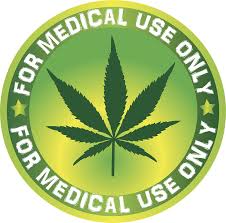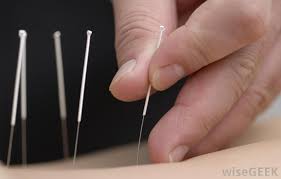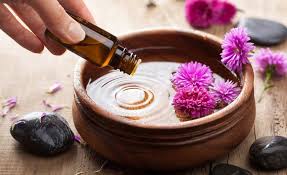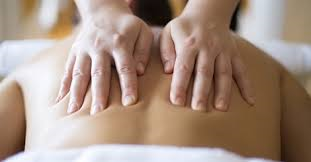 This article originally appeared in the Fall 2017 issue of Living Safer Magazine (Vol. 9 Ed. 3)
This article originally appeared in the Fall 2017 issue of Living Safer Magazine (Vol. 9 Ed. 3)
Legal & Safety Blog
Avoid Opioids: 5 Alternatives for Pain Management
By Matthew Casey
Pain is the most common reason people seek medical care, according to the National Institute for Health. One hundred million Americans suffer daily pain symptoms, and chronic pain is the leading cause of long-term disability in our country. These numbers will only increase as our population ages, amplifying the need for effective, accessible interventions to manage chronic pain and preserve function.
One common treatment for pain is the use of opioid medications. However, opioid medications, including oxycodone, hydrocodone and fentanyl, are highly addictive. There is little debate that the over-prescription of opioids is contributing to cause an opioid crisis in the United States. In 2015, annual overdose deaths surpassed deaths from both car accidents and guns.
Opioids can lead to addiction and put you and your family at risk. The good news is there are many alternatives to pain relief. Before you fill a prescription for an opioid pain killer you may want to consider the 5 most common alternative pain relief methods outlined below.
 Medical Marijuana
Medical Marijuana
Twenty-Nine States and Washington D.C. have legalized the use of marijuana for medical purposes. Studies show that both inhaled marijuana (vaporized or smoked) and cannabinoid compounds that come from the cannabis plant (like THC, mostly responsible for the high, or cannabidiol, CBD, one of the most medically promising of the hundreds of chemical compounds found in marijuana) work for pain. This is likely related to the natural cannabinoid receptors we already have in our bodies which doctors think play a role in pain control. Recently seven peer reviewed articles focused on the effectiveness of marijuana on pain relief. Six of the seven articles associated cannabis use with lowered chronic and neuropathic pain.
 Psychotherapy
Psychotherapy
Pain serves an important purpose by alerting you to injuries such as a sprained ankle or burned hand. Chronic pain, however, is often more complex. People often think of pain as a purely physical sensation. However, pain has biological, psychological and emotional factors. Furthermore, chronic pain can cause feelings such as anger, hopelessness, sadness and anxiety. Recurrent pain may contribute to development of maladaptive cognitions and behavior that worsen daily functioning, increase psychiatric distress, or prolong the experience of pain. To treat pain effectively, you must address the physical, emotional and psychological aspects.
There are several different psychological therapies that may help chronic pain including operant behavioral approaches, mindfulness-based stress reduction, and acceptance and commitment therapy, but the most popular is cognitive behavioral therapy (CBT).
CBT is a form of talk therapy that helps people identify and develop skills to change negative thoughts and behaviors. CBT says that individuals — not outside situations and events — create their own experiences, pain included. And by changing their negative thoughts and behaviors, people can change their awareness of pain and develop better coping skills, even if the actual level of pain stays the same.
 Acupuncture
Acupuncture
Acupuncture uses needles to stimulate certain points on or under the skin. The method of treating pain, nausea, and many other conditions has been used in Eastern medicine for centuries. Acupuncture works by activating the body’s own self-healing mechanism. The needles are thought to stimulate nerves, which then send signals to the brain to release feel-good hormones such as beta-Endorphins, reduce pro-inflammatory markers that lead to inflammation and pain, and stimulate nerve regeneration. In 2012, a study found acupuncture was better than no acupuncture or simulated acupuncture for the treatment of four chronic pain conditions – back and neck pain, osteoarthritis, chronic headache and shoulder pain.
 Aromatherapy
Aromatherapy
A whiff of vanilla or lavender might bring back pleasant memories of your mother’s kitchen or grandparents’ backyard. But aromatics can do more than soothe your mind. Studies show that aromatherapy also may soothe your body and relieve pain.
Aromatherapy refers to the medicinal or therapeutic use of essential oils absorbed through the skin or olfactory system. Essential oils, which are derived from plants, are used to treat illness as well as to enhance physical and psychological well-being. Aromatherapy is most commonly applied topically, or through inhalation. When applied topically, the oil is usually added to carrier oil and used for massage. Essential oils can be inhaled through a humidifier or by soaking gauze and placing it near the patient.
Whether absorbed or inhaled, eventually the chemicals reach your limbic system — the network of nerves in your brain that controls your instincts and emotions. They can alter your perception of pain and potentially improve your mood. Medical studies show that aromatherapy is linked with decreased levels of cortisol – the hormone associated with stress, a lower heart rate, less pain, reduced inflammation, and improved anxiety and depression.
 Massage Therapy
Massage Therapy
People seek out massage therapy for many reasons, including a drug-free alternative to pain management. Massage comes in two forms, relaxation and rehabilitative massage that can help rehabilitate injuries and reduce pain. The stretching and kneading of soft tissues in the body, and pressure applied to various points on the body, relaxes muscles. But massage does more than just relax muscles; new research has shown that massage activates certain genes to directly reduce inflammation.
The effectiveness of massage therapy for pain has been supported by various studies. It has been found most effective for non-specific lower back pain, both acute and chronic, but studies have also found massage to be effective for shoulder pain, headache pain, fibromyalgia, mixed chronic pain, and neck pain. One specific type of massage known as Osteopathic Manual Treatment (OMT), has been found to be particularly effective for lower-back pain. OMT is administered by an osteopathic physician, rather than a massage professional. In a review of clinical studies, OMT was shown to provide significant reductions in lower back pain with results lasting up to three months.
Casey & Devoti is a St. Louis-based personal injury law firm. Together Partners Matt Casey and Matt Devoti have nearly 40 years of trial experience. They handle a variety of personal injury matters, including: car, truck and train accidents, victims of impaired and distracted driving, medical malpractice and birth injuries, product liability, slips/trips/falls, elder care and sexual abuse, Workers’ Compensation, and wrongful death. Matt and Matt proudly serve clients throughout metropolitan St. Louis, southeastern Missouri and southern Illinois. If you or a loved one have been injured by the negligence of another, call the office today for a free, no-obligation consultation: (314) 421-0763.









